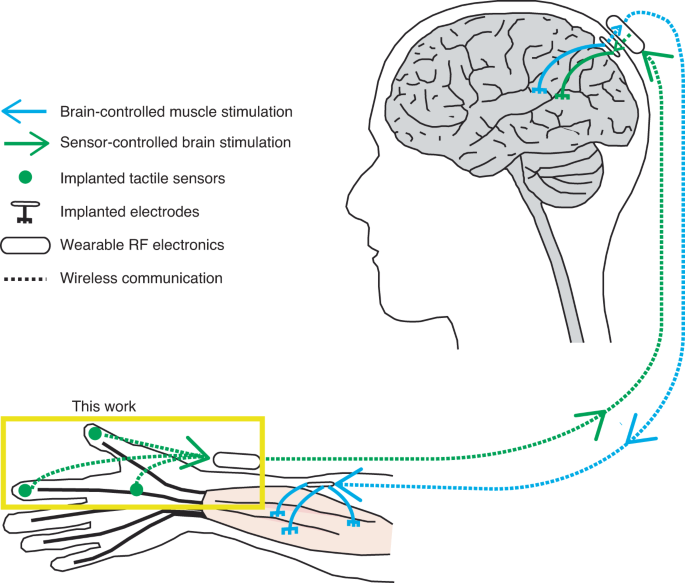The Dawn of a New Era in Human-Machine Symbiosis
For decades, the concept of a direct link between the human brain and a computer has been a cornerstone of science fiction, promising a future where thought alone can control machines, restore lost function, and unlock new realms of communication. This field, known as Brain-Computer Interfaces (BCIs), is rapidly moving from theoretical research to tangible reality. However, progress has been hampered by a fundamental challenge: the physical interface between delicate neural tissue and rigid electronic hardware. Traditional methods often force a compromise between invasiveness, signal quality, and long-term stability. A recent breakthrough in materials science and microfabrication is set to shatter these limitations. The development of ultra-flexible, hair-thin neural sensors represents a monumental step forward, bringing the promise of seamless, high-fidelity BCIs closer to everyday use. This advancement is not just an incremental update; it is a paradigm shift poised to redefine everything from medicine to consumer electronics, marking a pivotal moment in Neural Interfaces News.
From Rigid Probes to Flexible Filaments: A Technical Evolution
To appreciate the magnitude of this innovation, it’s essential to understand the limitations of previous BCI technologies. The quest for high-quality neural signals has historically followed two distinct paths, each with significant drawbacks.
The Challenge of Traditional Neural Interfaces
On one end of the spectrum is non-invasive technology like electroencephalography (EEG), which uses scalp-mounted electrodes to measure electrical activity. While safe and easy to use, EEG suffers from low spatial resolution. The skull, scalp, and other tissues blur the electrical signals, making it difficult to pinpoint their exact origin or capture the nuanced activity of individual neurons. It’s akin to trying to hear a single conversation in a crowded stadium from outside the gates.
On the other end are invasive microelectrode arrays, such as the Utah Array. These are rigid, needle-like grids implanted directly into the brain tissue. They offer excellent, high-resolution signals capable of recording from individual neurons. However, their rigidity is a major flaw. The brain is a soft, dynamic organ that moves subtly with every heartbeat and head turn. A rigid implant creates constant micro-motion and friction against the surrounding tissue. This leads to inflammation, scarring (gliosis), and a gradual degradation of the signal over weeks or months as the body’s immune system tries to isolate the foreign object. Furthermore, these rigid probes are susceptible to noise and signal loss during physical movement, limiting their practical use outside of a controlled lab setting. This has been a significant bottleneck for progress in areas like Health & BioAI Gadgets News and the development of truly functional neuroprosthetics.
The Breakthrough: High-Density, Biocompatible Micro-Sensors
The new generation of neural sensors addresses these issues head-on. Instead of rigid silicon, these probes are fabricated on ultra-thin, flexible, and biocompatible polymer substrates, such as parylene or polyimide. Their physical dimensions are staggering—often with a thickness comparable to or even less than a human hair. This incredible flexibility allows them to move and flex in harmony with the brain tissue, a property known as mechanical compliance.
By minimizing the mechanical mismatch between the implant and the brain, these sensors cause significantly less tissue damage and provoke a much milder immune response. This results in more stable, high-quality recordings that can last for much longer periods. The microfabrication techniques used to create them allow for an incredibly high density of electrodes to be packed onto a tiny footprint, enabling the simultaneous recording of thousands of neurons with unparalleled precision. This leap in sensor technology is a major story in AI Sensors & IoT News and is driving a new wave of AI Research / Prototypes News.

Inside the Technology: How Hair-Thin Probes Achieve Superior Performance
The remarkable performance of these next-generation neural interfaces stems from a convergence of advanced materials science, sophisticated fabrication processes, and a fundamentally different approach to interfacing with biological tissue.
Advanced Materials and Microfabrication
The choice of material is paramount. Polymers like parylene-C are ideal because they are not only flexible but also have excellent biocompatibility and serve as a robust electrical insulator. The fabrication process, often adapted from the semiconductor industry, involves techniques like photolithography. This allows engineers to pattern microscopic conductive traces (often made of gold or platinum) and electrode sites onto the polymer substrate with nanometer-scale precision. The result is a dense, highly capable sensor array that is both mechanically compliant and electronically powerful. This synergy of materials and manufacturing is pushing the boundaries of what’s possible in miniature electronic devices, a theme often seen in AI Edge Devices News.
Conquering Movement Artifacts: The Key to Practicality
The most significant advantage of these flexible probes is their ability to maintain a clear signal even during intense physical activity. When a person with a rigid implant moves, the probe shifts against the brain, creating electrical noise that can overwhelm the subtle neural signals. This “movement artifact” has been a persistent barrier to creating BCIs for real-world use.
Flexible probes solve this problem elegantly. Because they are so light and compliant, they effectively “float” within the brain tissue, moving with it rather than against it. This maintains a stable connection to the target neurons, preserving the integrity of the signal-to-noise ratio. A real-world scenario could involve a patient with a neuroprosthetic limb. With older technology, the signal might degrade when they walk or reach for an object. With these new sensors, they could maintain fine motor control of a robotic arm while navigating a complex environment, a development of keen interest for the Robotics News and AI for Accessibility Devices News communities.
Unlocking the Future: Real-World Applications and Implications
The ability to safely record high-fidelity neural signals from large populations of neurons over long periods, even during movement, is not just a technical achievement; it is a key that unlocks a vast landscape of transformative applications across medicine, consumer technology, and beyond.
Revolutionizing Medicine and Human Augmentation
The most immediate impact will be in medicine. For individuals with paralysis due to spinal cord injury, stroke, or ALS, these sensors could power BCIs that translate thought into speech or control advanced prosthetic limbs with natural, fluid dexterity. The high-quality data could also be used to create more effective therapies for neurological disorders. For example, by precisely monitoring the neural activity that precedes an epileptic seizure, a closed-loop system could deliver targeted electrical stimulation to prevent it. This has profound implications for AI Monitoring Devices News and the creation of personalized therapeutic gadgets. Furthermore, this technology could form the basis of future AI Sleep / Wellness Gadgets News, providing unprecedented insight into brain activity during sleep for treating disorders like insomnia and sleep apnea.

Beyond Healthcare: The Consumer and Commercial Horizon
As the technology matures and becomes less invasive, its potential applications will expand into the consumer realm. Imagine the future of human-computer interaction:
- AR/VR and Gaming: The ultimate input device for augmented and virtual reality. Instead of clumsy controllers, users could manipulate virtual objects and navigate digital worlds with the speed of thought. This would be a game-changer for AR/VR AI Gadgets News and AI in Gaming Gadgets News.
- Creative Tools: Artists, designers, and musicians could interact directly with digital creation software, translating concepts into reality without the intermediary of a mouse or keyboard. This would be a major story for AI Tools for Creators News.
- Smart Environments: The seamless control of our surroundings, from smart homes to vehicles. A driver’s cognitive state could be monitored for fatigue or distraction, enhancing safety in the world of Autonomous Vehicles News. Similarly, a user could adjust lighting and temperature in their home, a topic relevant to Smart Home AI News and AI Lighting Gadgets News.
- Seamless Communication: This technology could eventually lead to thought-based communication, revolutionizing how we interact with AI Assistants News and AI Companion Devices News.
The Path Forward: Challenges, Ethics, and Recommendations
While the promise of advanced neural interfaces is immense, the road to widespread adoption is paved with significant technical, ethical, and societal challenges that must be addressed responsibly.
Technical and Scalability Hurdles
Despite their advantages, the long-term stability of these flexible probes over many years still requires further validation. The sheer volume of data generated by thousands of electrodes requires immense computational power for processing and decoding, necessitating further advances in AI algorithms and low-power, high-performance edge computing. Furthermore, scaling up the manufacturing process to reduce costs and ensure consistent quality will be critical for moving these devices from the lab to the clinic and eventually to the market. This involves not just the sensors but the entire ecosystem, from surgical implantation techniques to the wireless transmission of data.

The Ethical Labyrinth of Neural Interfaces
As we gain the ability to read and potentially write information to the brain, we must confront profound ethical questions. Who owns the data generated by a person’s thoughts? How can we ensure the security of this data against malicious actors or “brain-hacking”? What are the societal implications of cognitive enhancement, and how do we prevent a future where access to this technology creates a new form of inequality? These questions demand a proactive and inclusive public dialogue involving scientists, ethicists, policymakers, and the general public. Ensuring privacy and security will be a major focus for future AI Security Gadgets News.
Tips and Considerations for Development
For researchers and developers in this space, a few guiding principles are essential:
- Prioritize Safety and Biocompatibility: The long-term health and well-being of the user must be the primary concern.
- Adopt a Human-Centric Design: Technology should be designed to augment human capabilities transparently and intuitively, not to be intrusive or overwhelming.
- Foster Interdisciplinary Collaboration: Breakthroughs will come from the close collaboration of neuroscientists, materials scientists, electrical engineers, AI specialists, and ethicists.
- Engage in Transparent Communication: Building public trust requires open communication about the capabilities, limitations, and potential risks of the technology.
Conclusion: Charting the Course for a New Frontier
The development of hair-thin, flexible neural sensors is a landmark achievement in the field of brain-computer interfaces. By overcoming the critical limitations of rigidity and movement artifacts, this technology provides a clear path toward creating safe, stable, and high-fidelity links between the human brain and digital systems. While significant challenges remain, the potential to revolutionize medicine, restore lost function, and redefine human-computer interaction is no longer a distant dream. This breakthrough lays the foundation for a future where technology seamlessly integrates with our biology, unlocking unprecedented possibilities for health, communication, and creativity. As we continue to explore this new frontier, a responsible, ethical, and human-centric approach will be paramount to ensuring that these powerful tools are used to benefit all of humanity.










